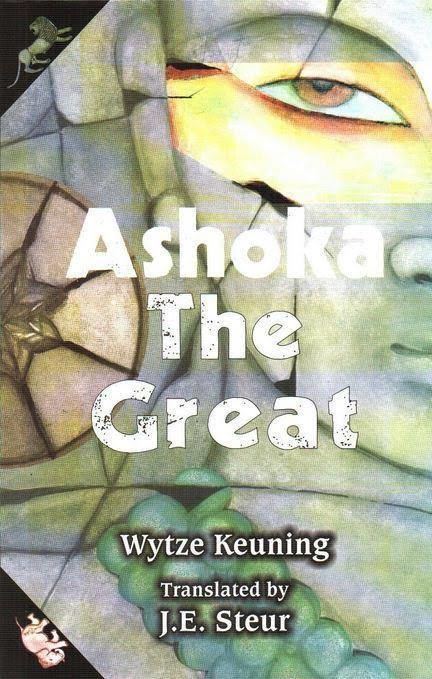8.6 /10 1 Votes
Translator J.E.Steur Subject Ashoka, Ancient India Publication date 2011 Originally published 2011 Page count 1,057 | 4.3/5 Goodreads Language English Publisher Rupa Publications Media type Print (Hardcover) Genre Historical drama | |||||||||||||||||||||||||||||||||
 | ||||||||||||||||||||||||||||||||||
Similar Ashoka: The Search for India's, Aśoka and the decline of the Ma, Divyavadana, The Nine Unknown, Mahavamsa | ||||||||||||||||||||||||||||||||||
Ashoka The Great is a fictional biography of the emperor Ashoka. It was originally written in Dutch in the form of a trilogy by Wytze Keuning in 1937-1947. These were translated into English and combined into a single volume by J.E.Steur.
Contents
Plot
The book covers the story of Emperor Ashoka from his youth. He has just finished his education. He is a skilled warrior. He discusses the teachings with the holy Sayana, his guru.
Ashoka : The Wild Prince
The book narrates Ashoka's story of youth when he is referred to as 'the wild prince' by the people of his father's kingdom. He is not yet a king and he is unsure about what his father,Bindusara, thinks. Even Bindusara is not sure of what he should do. The laws laid down by the Arthashastra prompt him to proclaim Sumana, his eldest son, as his natural successor. But, he feels that Ashoka is more able. But, Sumana is supported by the Brahmin Council who should not be messed with. The Brahmin council has a huge control over the people in the kingdom, for they make people believe in their spiritual powers, when most of them have none. They use persuasion and vile to dissuade Bindusara from appointing Ashoka as the Viceroy of Taxila, when a rebellion breaks out. However, Bindusara is aware of all their doings because he keeps a network of highly trusted spies. He ensures that Ashoka does not face much problems in his journey to Taxila. He also tells Ashoka to never let down his guard. In his way to Taxila, Ashoka prevents a woman from committing Sati. When he reaches Taxila, he realizes that the people had rebelled only because they were not happy with the administration. Ashoka helds meetings with his courtiers and the foreigners and restores peace.
Ashoka : The Wise Ruler
This book covers his further encounters with the villains sent by the Brahmin court including the cunning Shakuni. He also marries the lovely and wise Asandhamitra, who h o believe in the teachings of the Buddha. This book takes you to Ujjain. Ashoka's children Mahinda and Sanghamitta are born. It ends with the Battle of Kalinga and remorse faced by the mighty emperor The story is based on half truths and is more of an ode to Ashoka. Does not highlight the cruel side of the king who killed 90 step brothers to usurp the throne . It also does not highlight the cruelty he displayed after embarrassing Buddhism by killing 18000 followers of a Jain sect. He speaks of remorse and repentance but puts the inscriptions in far places away from the Kalinga battle town. It is suspected that it was a political move to assuage the masses.<SANJEEV SANYAL'S BOOK- THE OCEAN OF CHURN:HOW THE INDIAN OCEAN SHAPED HUMAN HISTORY.. PENGUIN.>
Characters
Discovery of the original Dutch books
In the preface, Steur describes her 'discovery' of the books. After the discovery, she got in touch with Keuning's descendants, but none of them knew about this creation of Keuning. She discovered that it was written in the town of Groningen of Netherlands where the books were written first during the Nazi era.
